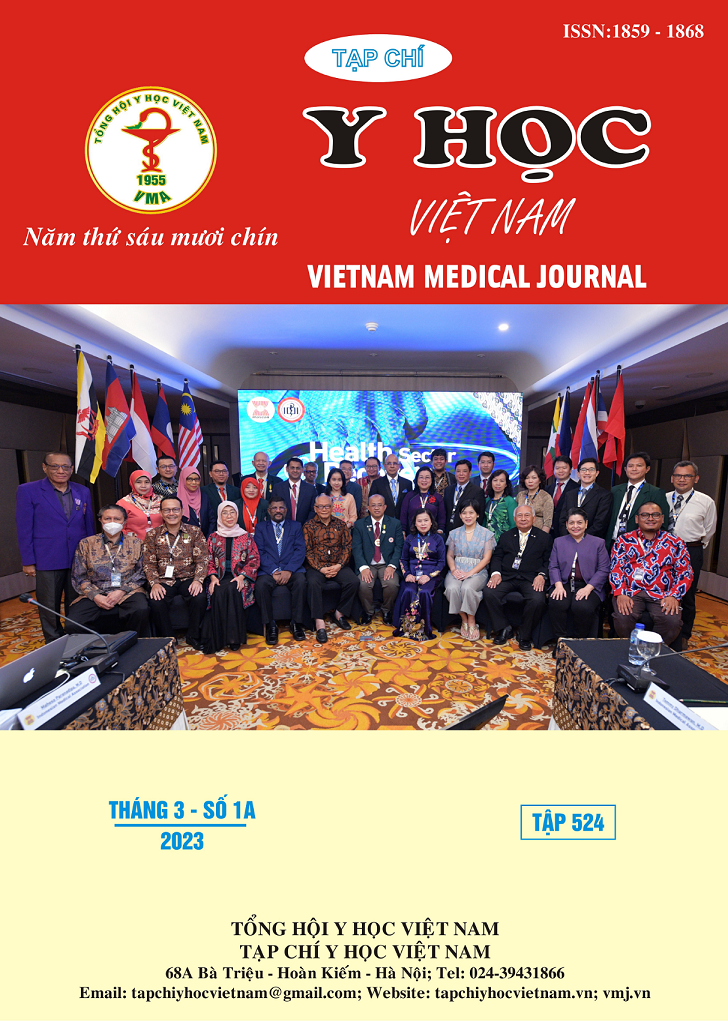CLINICAL AND SUBCLINICAL CHARACTERISTICS OF BRUGADA SYNDROME PATIENTS IN VIETNAM
Main Article Content
Abstract
Introduction: Brugada syndrome (BrS) is an inherited cardiac arrhythmia that strongly increases the risk of ventricular arrhythmia and sudden death. Vietnam belongs to the region with the highest frequency of BrS in the world. In our country, the clinical and subclinical symptoms of the disease have been described in small sizes, mainly in case-serie reports at several certain medical units. Objectives: To investigate the clinical and subclinical characteristics in BrS patients. Subjects and methods: A crossectional descriptive study in 117 BrS patients, investigated some clinical and subclinical characteristics, in hospitals in Ho Chi Minh City and Hanoi. The disease was diagnosed according to the European Heart Rhythm Society 2015 criteria. Results: There were 67,5% patients with no family history (most of the remaining having a sudden was under 45 years old); 53,0% were asymptomatic; 38,5% had syncope; 58,1% had no comorbidities; 73,5% were installed automated defibrillators. There were 70,9% with type 1 ECG; 9,4% were underwent a flecanide test (postive in 9/11 cases); 59,8% had an electrophysiologic study (postive in 55/70 cases). Conclusion: The frequencies of some clinical and subclinical characteristics in BrS patients has been determined, similar to those published in the world.
Article Details
Keywords
Brugada syndrome
References
2. Hosseini, S.M., et al., Reappraisal of reported genes for sudden arrhythmic death: evidence-based evaluation of gene validity for Brugada syndrome. 2018. 138(12): p. 1195-1205.
3. Postema P.G., About Brugada syndrome and its prevalence. J Europace, 2012. 14(7): p. 925-928.
4. Offerhaus, J.A., C.R. Bezzina, and A.A.J.N.R.C. Wilde, Epidemiology of inherited arrhythmias. 2020. 17(4): p. 205-215.
5. Antzelevitch C. and Patocskai B., Brugada syndrome: clinical, genetic, molecular, cellular, and ionic aspects. J Current problems in cardiology, 2016. 41(1): p. 7-57.
6. Members, A.T.F., et al., 2015 ESC Guidelines for the management of patients with ventricular arrhythmias and the prevention of sudden cardiac death: The Task Force for the Management of Patients with Ventricular Arrhythmias and the Prevention of Sudden Cardiac Death of the European Society of Cardiology (ESC) Endorsed by: Association for European Paediatric and Congenital Cardiology (AEPC). 2015. 17(11): p. 1601-1687.
7. Antzelevitch C., Yan G.-X., Ackerman M.J., et al., J-Wave syndromes expert consensus conference report: emerging concepts and gaps in knowledge. 2017. 19(4): p. 665-694.
8. Jons C. and Gollob M.H., Brugada syndrome: Let's talk about sex. J Heart rhythm, 2018. 15(10): p. 1466-1467.
9. Priori S.G., Napolitano C., Giordano U., et al., Brugada syndrome and sudden cardiac death in children. J The Lancet, 2000. 355(9206): p. 808-809.
10. Probst, V., et al., Long-term prognosis of patients diagnosed with Brugada syndrome: results from the FINGER Brugada Syndrome Registry. 2010. 121(5): p. 635-643.


